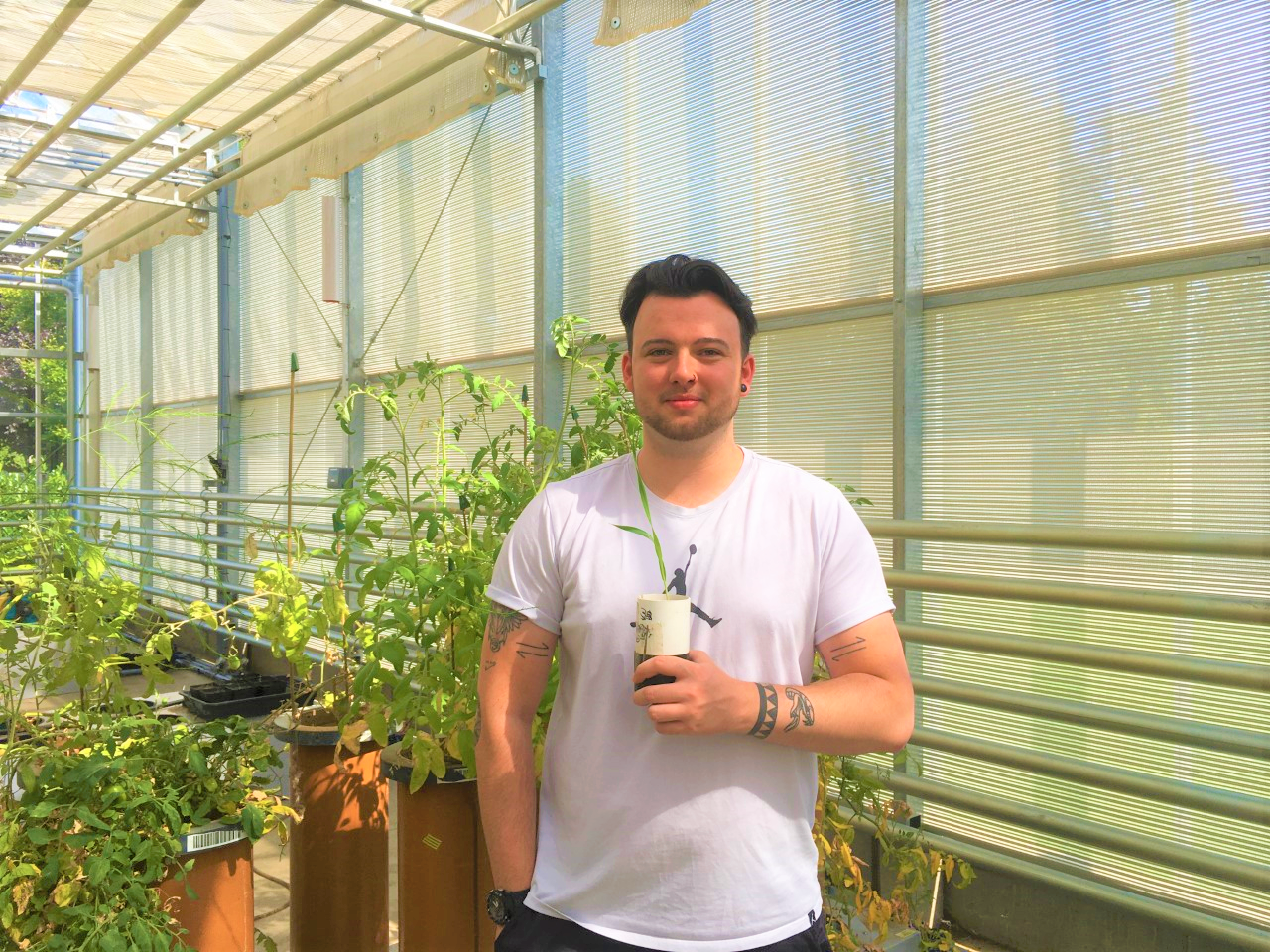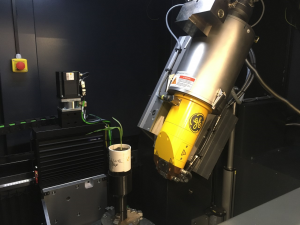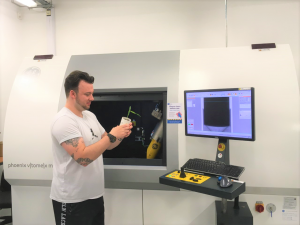
August 18, 2020, by Rob Ounsworth
Lockdown, wireworms and me: it’s good to back in the Hounsfield
Sam Booth, a second-year soil science PhD student, reflects on his return to work in the Hounsfield Facility at Sutton Bonington Campus
The Hounsfield Facility is a state-of-the-art X-ray Computed Tomography (CT) lab, focusing on imaging soil characteristics and the organisms that inhabit it, as well as projects with various industries.
My research, funded by Syngenta, uses X-ray CT to investigate interactions between root structures and click beetle larvae, commonly called wireworms. These wireworms are of economic importance, as they can significantly reduce crop yields through decreased seedling emergence and cosmetic damage to root vegetables. Effective management strategies are sparse due to the long life cycle of these organisms as well as the restrictions on pesticides that have effectively controlled populations in the past. By understanding wireworm behaviour in soil and their interactions with root structures, it may possible to aid development of better localised treatments such as seed coatings, allowing the industry to move away from broad spectrum, spray-applied pesticides.
As with all research activity, my progress over the last few months has been hindered by the COVID-19 pandemic, with laboratories and office spaces closing in mid-March. However, I have been almost uniquely fortunate: in X-ray CT studies, images are stored electronically for later analysis, and coming off the back of a large experiment, the follow up work to the recently published pilot study, I had a vast amount of CT scans stored on hard drives ready for processing and data segmentation. This kept me busy for the first couple months of lockdown, and being able to work on these scans from home meant my daily routine didn’t change too much.
After this type of work dried up though, and I was reduced to focusing solely on writing and preparing for future experiments, I found it much more difficult to concentrate, and became desperate to return to normality and to be able to see my colleagues. My supervisors, Professor Sacha Mooney and Dr Craig Sturrock have been fantastic throughout this crisis and incredibly supportive, ensuring I stay on track and always available for a meeting or catch-up on Teams.
Our building is now full of one-way systems, sanitization points
and separated work stations to allow social distancing…
as strange as it may seem, it’s working
Sam Booth
The Hounsfield facility got the green light to reopen on 16 July, and I was able to return the following week after completing all the required forms, training and updated risk assessments. I’m now focusing on preparing to evaluate wireworm burrowing behaviour in response to different crop protection treatments. It’s evident from being in the building how much effort has been put into the reopening and to keep people safe by the safety office, the facility manager and the estates team.
Our building is now full of one-way systems, sanitization points and separated work stations to allow social distancing. It’s strange being back in this way as the building seems so empty, and the new procedures we have to follow such as sanitising computer stations before/after use seem alien. As strange as it may seem, it’s working. These measures have allowed me to return to work in a safe environment with minimal risk of COVID-19 transmission.
If people continue to abide by these measures in labs already operational, more and more buildings will gain approval for opening, and allow researchers to get back to doing what they do best.
Please note: all staff must await notification from their line manager before returning to campus, so this process can be managed safely
Find out more about the University’s recovery planning
No comments yet, fill out a comment to be the first



Leave a Reply